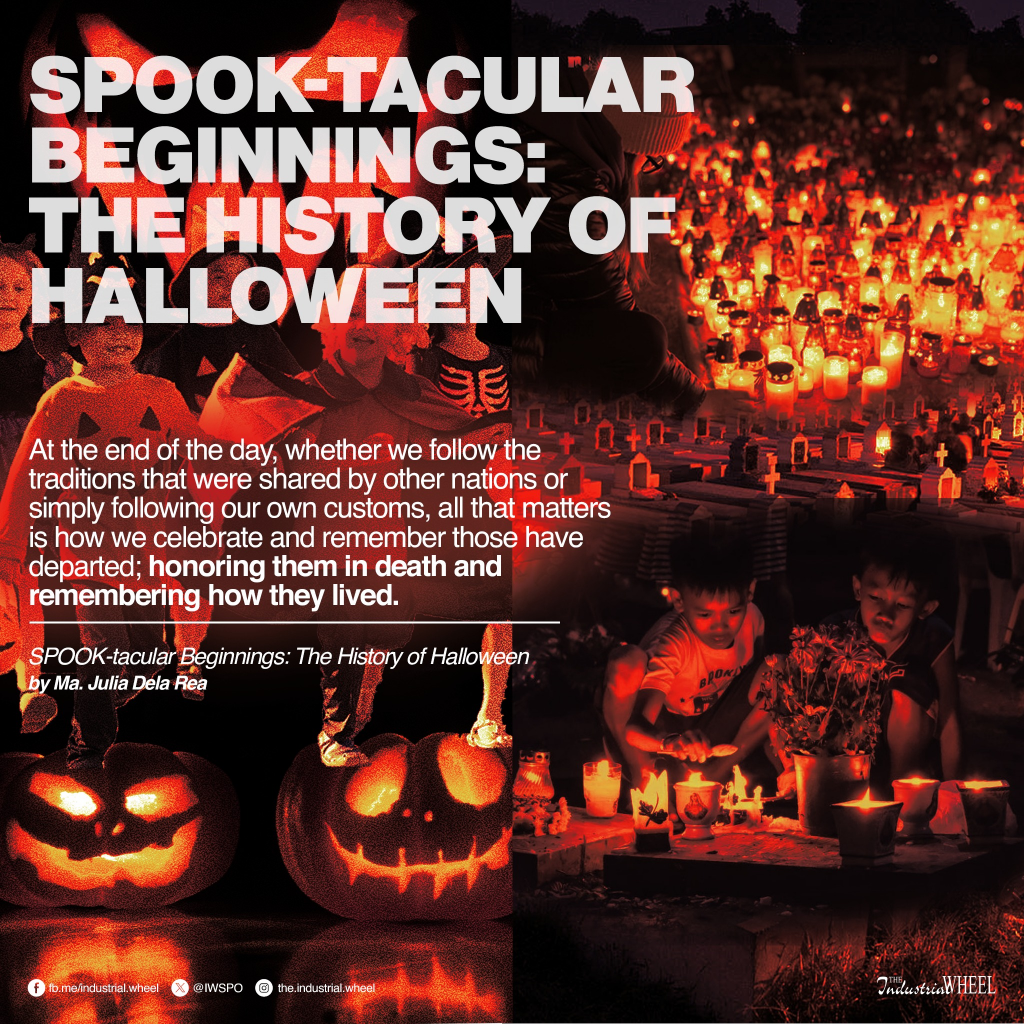
Where the moon shows itself from the clouds when the clock strikes 12.The howling of the dogs and cackles of the unknown is heard throughout the night. Finally, midnight has arrived.
A year that is most awaited— where boys and girls roam around the streets with a bucket full of sweets, house of horrors filled with screams of terror, spooky tales to tell at night that sends shivers down your spine and keeps you up at night An unforgettable fright fest, Halloween is here.
Halloween is a festivity that is annually celebrated by all corners of the world at the month of October 31st, where different cultures have their own way on how to spend the spookiest event of the year.
Halloween can be traced back in ancient Celtic festival of ‘Samhain,’ where the Celts light up bonfires to ward off evil spirits by putting on a costume. It is also the last day of the Celtic Calendar.
In Western regions, it is the day of the year where people of all ages dress up in silly costumes or scary outfits where children would go trick or treating by knocking on their neighbor’s doors for candy, or get tricked for not handing out sweets.
Most people believe that this tradition was introduced in the Philippines by the West, but Filipinos have spent Halloween long before the Americans colonized the country.
However, it was during the Spanish period that influenced the tradition to Filipinos which is still practiced in today’s time.
While Western nations celebrate Halloween to wear ‘ scary’ costumes to spook people for candy and carve pumpkins as jack-o’-lanterns; Filipinos commemorate Halloween for the day of the dead.
According to Filipino folks, the holiday is just a prelude for All Hallow E’en, with its shortened term being All Saints Day. The word for it in Spanish is ‘Vispera de Todos Los Santos.’
However, it was Pope Gregory III who established that the 1st day of the month of November is to honor all saints that compromised traditions of the Samhain.
In the Philippines, there is a ceremony that is done before All Saints Day and that is called ‘pangangaluwa.’
Pangangaluwa is a ritual that is done in rural barrios, yet still continues since we Filipinos honor our loved ones who made it to the other side by going from house to house to remember our dearly departed who have crossed the other side by giving presents reminiscent of how they lived prior.
There is even a superstition in the Philippines that mythical creatures would appear every October 31, but it’s (might be) just a hoax to scare off young children.
At the end of the day, whether we follow the traditions that were shared by other nations or simply following our own customs, all that matters is we how we celebrate and remember those have departed; honoring them in death and remembering how they lived.
Article by Ma. Julia Dela Rea
